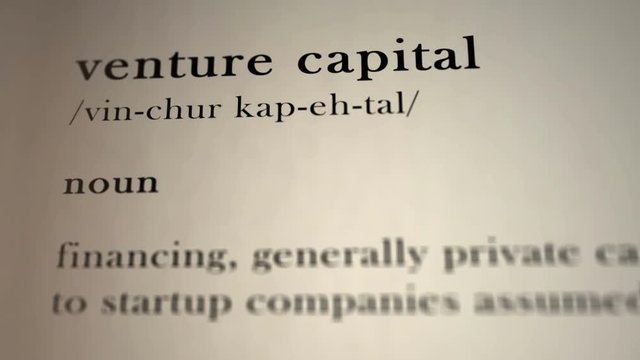
Venture Capital is the lifeblood of innovation and growth in many industries. Imagine a groundbreaking technology, a revolutionary product, or a disruptive business model waiting to transform the world. Often, the path to bringing these visions to life requires more than just hard work; it requires significant funding. That’s where venture capital comes in. This guide explores the world of venture capital, addressing common challenges and outlining proven strategies to understand, navigate, and potentially participate in this dynamic field. We’ll cover the essentials, from defining venture capital to examining varied investment stages and exploring critical factors like due diligence and exit strategies. By the end of this guide, you’ll have a solid foundation to understand venture capital in detail, potentially unlocking profitable opportunities.
What is Venture Capital?
Defining Venture Capital
Venture capital (VC) is a type of private equity investment made in early-stage companies with high growth potential. Think of it as capital offerd to companies that haven’t yet reached profitability but demonstrate a strong potential to scale and achieve significant returns. Vesting often occurs in exchange for equity ownership in the company, and venture capitalists typically partner closely with management teams to advise and support them in achieving their objectives. This collaborative approach helps entrepreneurs navigate the complexities of growth and development.
Venture Capital vs. Other Investment Types
Venture capital differs significantly from other types of investment. Unlike traditional investments such as bonds or stocks traded in the public industry, VC investments are typically long-term, illiquid, and involve a higher degree of risk. This risk, however, is often offset by the potential for extremely high returns, especially when achievementful exits are achieved. These factors highlight the distinct attributes and considerations inherent in venture capital.
Investment Stages
Related Post : Commodity Investment Risks: Navigating Price Swings in Business
Seed Funding
Seed funding is the initial investment offerd to a startup company as it develops its product or service, creates its business model, and begins testing its industry plan. This is a critical stage, as it often determines whether the company is viable and has the potential to attract further investment.
Series A Funding
Following seed funding, Series A funding typically helps companies expand their operations, improve their products, or enter new industrys. This stage often comes with more stringent evaluation criteria from investors, reflecting the boostd risk relative to the seed stage.
Later-Stage Funding
Beyond Series A, venture capital funding often continues through subsequent series to support growth and scale. These stages involve increasingly larger investments and more sophisticated due diligence processes, driven by the company’s demonstrated progress and industry traction.
The Due Diligence Process
Assessing Company Potential
Venture capitalists dedicate significant resources to due diligence, meticulously evaluating the viability and potential of a company before investing. This process involves examining financial projections, understanding the rival landscape, and assessing the management team’s capabilities and experience.
Evaluating Financial Projections
Careful examination of financial models is essential to assess the company’s potential profitability and revenue streams over time. This involves understanding the financial assumptions and how realistic they are. Understanding and assessing cash flow projections are key indicators of financial health.
Evaluating Management Teams
Strong leadership is paramount to achievement. The experience and capabilities of the management team, their understanding of the target industry, and their ability to execute strategic plans are scrutinized extensively during the due diligence process. A strong team is often a critical achievement factor in VC-backed companies.
Exit Strategies
Initial Public Offerings (IPOs)
One key exit plan for venture capital investments is through an IPO, allowing investors to cash out by selling their shares on a public exchange. This can outcome in substantial returns for early-stage investors.
Mergers and Acquisitions (M&As)
Acquisitions by larger companies are another potential exit plan. This often occurs if a venture-backed firm is deemed valuable to an established competitor or complementary company.
Secondary industry Transactions
The secondary industry often allows investors to sell their shares to other investors before the company goes public or is acquired. This enables investors to access liquidity earlier in the venture capital investment lifecycle. These strategies are crucial for both entrepreneurs and investors.
Risks and Rewards
High-Growth Potential
Venture capital investments, while risky, offer the potential for high returns. effectively navigating the challenges of scaling a business and meeting investor expectations can lead to substantial financial gains.
Long-Term Commitment
Venture capital requires a long-term commitment from both investors and entrepreneurs. Patience and perseverance are paramount as the time horizon can span several years, or even decades. The risks are significant, and there is no guarantee of achievement.
Liquidity
Liquidity in venture capital investments is limited. Unlike public industry investments, the ability to quickly convert shares into cash may not be readily available. Understanding the long-term nature of the investment is a critical component of decision-making.
In conclusion, understanding venture capital is crucial for entrepreneurs and investors alike. Venture capital plays a vital function in funding innovation and growth, fostering economic development. By carefully considering the varied stages of investment, the due diligence process, and the various types of venture capital, individuals can make informed decisions and potentially unlock significant returns. This understanding empowers individuals to navigate the complex landscape of venture capital, capitalizing on opportunities and mitigating potential risks. Ready to embark on your venture capital journey? Learn more about the process by visiting [website address].